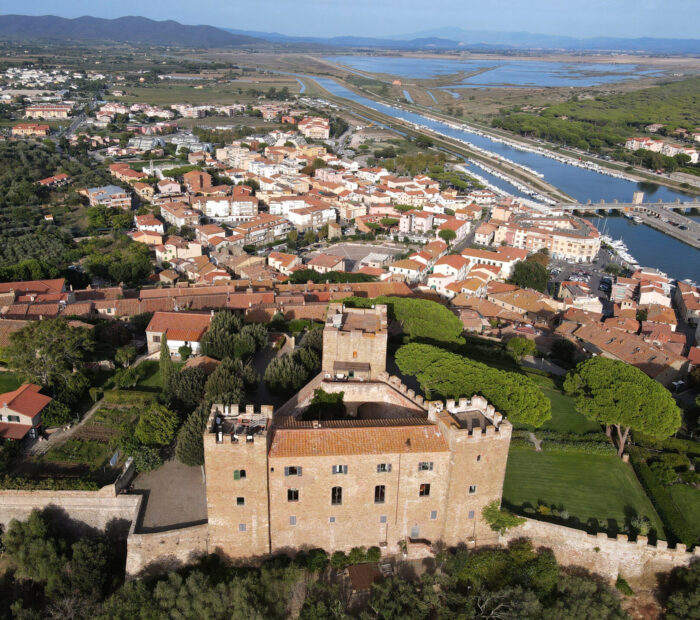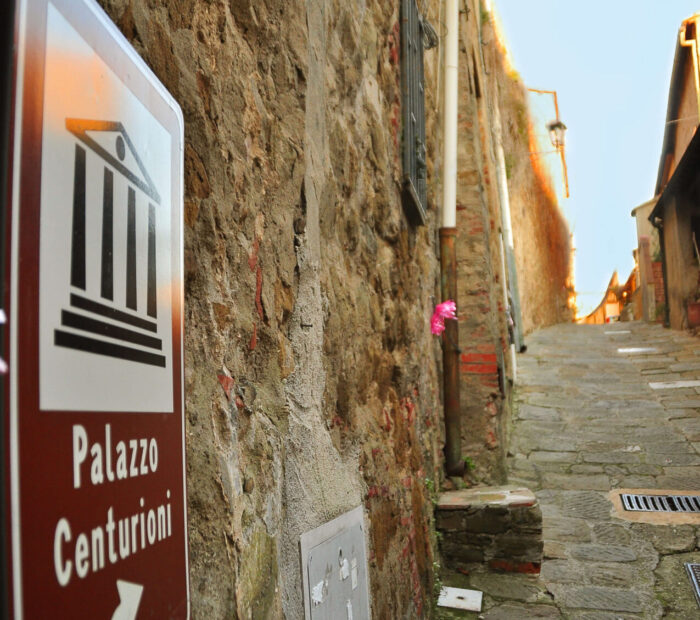Official tourism site of the municipality of Castiglione della Pescaia
Castiglione della Pescaia: history, local area and monuments

Castiglione della Pescaia is a town of Etruscan origin located on a hill near the sea. Its history is linked to the events of the Etruscans and the Romans, who have left important evidence of urban works such as aqueducts, viaducts and paved streets.
The town’s historic centre is dominated by an impressive medieval castle, built around a tower constructed by the Pisans in the 10th century. The castle is surrounded by walls that enclose the medieval village, composed of ancient houses and towers.
The walls around the town were built from the 10th century and are formed by the remains of two different walls.
The first circuit dates back to the 10th-13th century, when the village was under the protection of Pisa, while the second was built in the 15th century to defend the village on the hill.
In addition to the castle and medieval village, the Castiglione della Pescaia area also includes the Diaccia Botrona nature reserve, recognised as an area of international importance due to its rare ecosystem.
In 1404, Castiglione della Pescaia came under the protection of Florence and the Medici carried out numerous reclamation works in order to repopulate the area. However, the most decisive reclamation was done in the ten years from 1828-1838 under Leopold II, known as Canapone.
Today, Castiglione della Pescaia is a well-known seaside resort, famous for its beaches and its crystal-clear sea. The town offers many opportunities for lovers of nature, history and culture, and is an ideal place to spend your holidays.
The history of the castle
During the Etruscan era (9th to 3rd century BC), Castiglione della Pescaia was the site of Lake Prelius (or Lake Prile), a large salt lake that stretched as far as the sea. Important towns, such as Roselle and Vetulonia, developed along its shores. Present-day Castiglione della Pescaia is located where the port of Salebrum once stood, which became a stopping point along the Via Aurelia in Roman times. At that time, another Roman settlement arose on Clodia Island.
After the collapse of the Roman Empire, Castiglione della Pescaia underwent a period of decline until the Middle Ages, when the area came under the influence of Pisa. In the tenth and the thirteenth centuries, works began on the fortification of Castiglione, which at the time was called Castellione de Piscaria. A large tower, 16 metres in height, was built on the top of the hill, together with a defensive wall with small and large towers. In the 13th century, Castiglione della Pescaia became a free commune.
Castiglione della Pescaia castle was subsequently dominated by Siena and then occupied by the Aragonese in 1446, who restored the walls. In 1559, Castiglione della Pescaia was given as the dowry of Eleonora of Toledo to Cosimo I de’ Medici, Lord of Florence. Under Medici rule, the area had a partial revival, with attempts made to repopulate it by families of northern origin.
Today, the village of Castiglione, enclosed by its walls, is ideal for a historical stroll. From the town’s central square, you can climb to the upper village up a steep path, passing through a gate that leads to the perimeter walls. From the same square, you can reach the castle through the beautiful Santa Maria del Giglio gate, and then climb another steep path. From the castle you can enjoy a breathtaking view of the coast, with Rocchette and the Island of Elba to the north, and the Diaccia Botrona wetlands and the Uccellina Mountains, the Maremma Natural Park, Monte Argentario and Giglio Island to the south. On particularly clear days, you can see the Island of Monte Cristo and, at times, the mountains of Corsica.

































